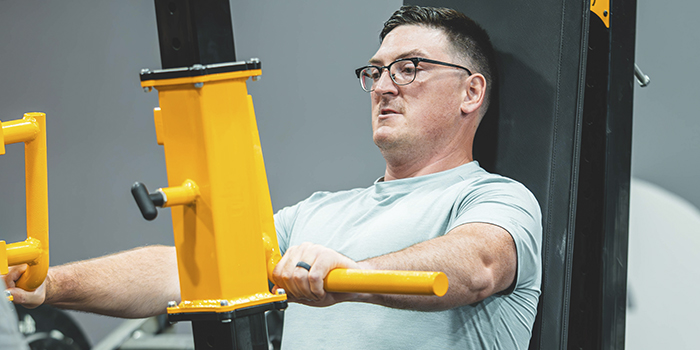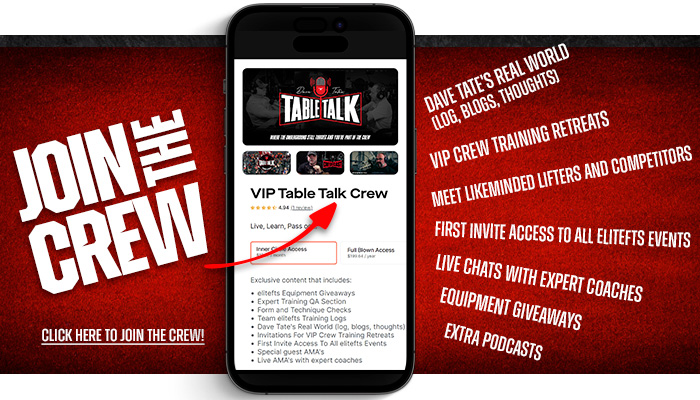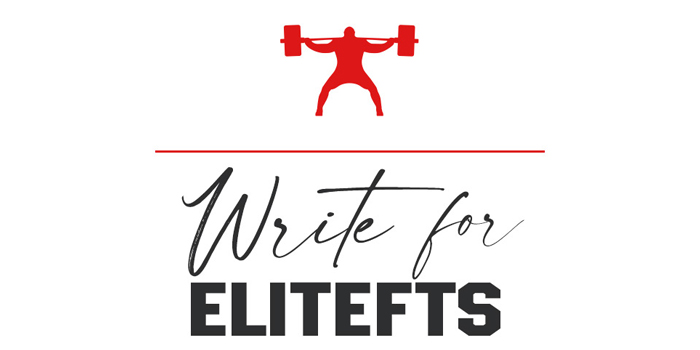
We all want to pursue enhanced performance in one way or another with strength training. Whether you are a strength, sport, or tactical athlete, we all want to dominate what we do. Often this causes us to focus on big muscle groups to enhance our performance. However, five small muscles could be holding you back from your goals.
Here is a breakdown of the five small muscles holding you back and exercises to try to make them your strong point and progress on the platform.
1. Serratus Anterior
When we think about improving the bench press, we automatically think of increasing our lats, to stabilize the weight, and triceps, to help lock it out at the top. But, what if I told you there is a small muscle that helps out with both of those actions? The Serratus Anterior is a muscle that wraps around the rib cage and is responsible for stabilizing and protracting the shoulder. This is also why it is known as the “boxer’s muscle”(1). If you watch any of the old Rocky movies, you will see the Serratus Anterior muscle sticking out of Stallone and Carl Weathers, making their ribs pop out a little.
So, when it comes to our performance, specifically benching and overhead pressing, the Serratus Anterior helps stabilize your shoulder blade to push through the movement. It is hard to push through something when you can not stabilize it. To train this muscle, focus on movements that are pushing away from your body and pushing up at the same time. Some good examples of these movements would be Single Arm Landmine Presses and Suspended Serratus Presses.
Suspended Serratus Press
YouTube
Half Kneeling Landmine Press
YouTube
2. Glute Medius
Anyone who squats big weights knows that you need to push your knees out to the side, not only to utilize your posterior chain, but to also hit depth. But what muscle is responsible for pushing the knees out to the side? The Gluteus Medius.
The Gluteus Medius is a small muscle that helps stabilize the hip and pull the leg out to the side (2). This means the Gluteus Medius plays a major role in opening up your hips and stabilizing them as you hit depth at the bottom of the squat.
Strengthening these muscles may feel like you are in your Mom’s Curves class, but rest assured, it will increase your performance! Two easy exercises to strengthen these muscles are clamshells and seated hip abductions. Keep in mind that the more hip flexion you have while doing these exercises, the more muscle activation will occur.
Banded Hip Abduction
YouTube
Banded Clamshells
YouTube
3. Adductors
In sports and training in general, you see many people pull their groin or tear something in their inner thigh when squatting or deadlifting big weights. This is often caused by a strain or some other kind of injury to the Adductors (3). This muscle group is responsible for keeping the knees stable and extending the hips, especially while squatting.
Weakness in this group can make it hard for many lifters to push their knees out to the side while squatting heavy weights. The good news is you can do plenty of things to strengthen your Adductors. The bad news is it does not take a lot of weight and it can be frustrating to work on. Standing Single Leg Hip Abductions are a good variation to start with. As you progress and need more of a challenge, then try the Copenhagen Plank.
Standing Hip Adduction
YouTube
Copenhagen Plank
YouTube
4. Tibialis Anterior
Have you ever experienced shin splints? The Tibialis Anterior is more than likely the muscle that is flaring up, causing that pain and discomfort. This is typically a more common issue for runners, but it could be holding back your gains on lifts as well. So, it is known that the Tibialis Anterior helps with energy absorption while walking(4), but it also plays a role in stabilizing the ankle joint. Olympic lifters have a lot of ankle flexion at the bottom of their squat for sure, but even powerlifters that squat with a vertical shank need this muscle to help stabilize their foot while squatting.
We focus a lot of time on our legs and hips, but how often do we train the lower half of the leg? Many people do train their calves so they look nice and big, but how often do you see them training the front of their ankles? Do yourself a favor and try strengthening them two times a week and see how much better your squat form feels after a few weeks. Some people get a Tib Bar or some sort of specialized piece of equipment to train these, but you can easily use a kettlebell like in this video below.
Weighted Dorsi Flexion
YouTube
5. Psoas
In modern-day work environments and increasingly sedentary lifestyles, the psoas has become a major issue when it comes to back pain. This muscle starts on the lower back and comes across the pelvis and attaches to the head of the femur. So, when we sit at work or on the couch all day, this muscle is in a shortened position. Over long periods of time, it may become accustomed to this position, making it difficult to walk around and causing discomfort in the lower back region.
Often a tight muscle is a weak muscle. Strengthening this muscle could help alleviate some of the low back pain you have been having so you can get back to training. The function of this muscle is to flex the thigh and stabilize the lumbar spine(5) which gives you plenty of different ways to train it. Try starting with the videos below.
Banded Active Straight Leg Raise
YouTube
Knee Tucks
YouTube
Putting It All Together
Knowing the exercises and understanding the weaknesses is one thing, but putting it together to reinforce your performance is another. Personally, it makes sense to work on the weak points during the accessory work after your main lift. If you do it before or after your main lift, there is a good chance you are going to fatigue that muscle and spell out disaster for your big lift for that day. Instead, do it afterward so you can focus all of your energy on the muscle and work it until near failure, safely! Here is an example week of how I would program it for a powerlifting athlete.
Sample Plan
Monday-Max Effort-Upper
Warm Up (Circuit)
- DB Bench Press 2x25
- Seated Low Rows 2x25
- Halos 2x10 each direction
RPE of 3 out of 10
Main Lift
Bench Press Football Bar
- Working up to a 5RM within 5-6 Sets
Accessories
(Circuit)
- ½ Kneeling Landmine Press 3x10 on each side
- Single Arm DB Rows 3x10 on each side
- DB Internal/External Rotations
Tuesday-Dynamic Effort Lower
Warm Up (Circuit)
- Goblet Squats 2x25
- Seated Hamstring Curls 2x25
- Incline Planks 2x30 seconds
RPE of 3 out of 10
Main Lift
Speed Squats
Using 30% of 1RM for 8x3
- 2 Chains on each side
- Safety Bar
Speed Deadlift
Using 40% of 1RM for 8x2
- Straight Weight
- Comp Stance
Accessories
(Circuit)
- Banded Clamshells 3x20 on each side
- Banded Active Straight Leg Raise 3x10 on each side
- Glute Ham Raise 3xBURN
Wednesday-REST
Thursday-Dynamic Effort Upper
Warm Up (Circuit)
- DB Incline Bench Press 2x25
- Cable Pull Overs 2x25
- Tricep Pushdowns 2x25
RPE of 3 out of 10
Main Lift
Speed Bench
Using 30% of 1RM for 8x3
- Double Mini Band on each side
- Football Bar, switch handles each set
Accessories
(Circuit)
- Suspended Serratus Press 3x15-20
- Dips 3xFAIL
- Lat Pulldowns 3x8-10
Friday-Max Effort Lower
Warm Up (Circuit)
- KB Swings 2x25
- Seated Hamstring Curls 2x25
- Banded Crunches 2x25
RPE of 3 out of 10
Main Lift
Back Squat
Working up to a 5RM within 5-6 Sets
- Cambered Bar
- 3 Chains on each side
- Sitting to a box at parallel
Accessories
(Circuit)
- Cambered Bar Good Morning Wide Stance 3x8-10
- Copenhagen Plank 3x20 seconds on each side
- Weighted Dorsi Flexion 3x20
As you can see, it is just one small piece of your training day. Over time, that small piece will accumulate and start paying dividends on all your big lifts!
Conclusion
You may have noticed that all of these muscles have one major thing in common. They all help stabilize your joints. You may not like working on these small muscle groups, but neglecting them can keep you from doing what you like to do. You do not have to train them extensively to see results, you just have to start training them, period!
References
- Anatomy, thorax, serratus anterior muscles - statpearls - NCBI bookshelf. (n.d.). https://www.ncbi.nlm.nih.gov/books/NBK531457/
- Schünke, M., Schulte, E., Schumacher, U., Ross, L. M., & Lamperti, E. D. (2006). Thieme atlas of anatomy. Stuttgart: Thieme. page 424
- Kiel J, Kaiser K. Adductor Strain. [Updated 2023 Jun 12]. In: StatPearls [Internet]. Treasure Island (FL): StatPearls Publishing; 2023 Jan-. Available from: https://www.ncbi.nlm.nih.gov/books/NBK493166/
- Maharaj, J. N., Cresswell, A. G., & Lichtwark, G. A. (2019). Tibialis anterior tendinous tissue plays a key role in energy absorption during human walking. The Journal of Experimental Biology, 222(Pt 11), jeb191247. https://doi.org/10.1242/jeb.191247
- Bordoni B, Varacallo M. Anatomy, Bony Pelvis and Lower Limb, Iliopsoas Muscle. [Updated 2023 Apr 24]. In: StatPearls [Internet]. Treasure Island (FL): StatPearls Publishing; 2023 Jan-. Available from: https://www.ncbi.nlm.nih.gov/books/NBK531508/
Teddy Cox is a dedicated performance and wellness coach with a robust track record of helping diverse clients achieve their health goals. His clientele includes high school and college athletes, firemen, police officers, special forces personnel, and individuals from the general population, whom he serves through both in-person and online platforms. Cox's methodology primarily employs the conjugate method, aimed at enhancing injury resilience to enable his clients to pursue their passions unhindered. He is the founder of Agoge Performance and also collaborates with The Ohio State Wexner Medical Center to train the Upper Arlington Fire Department.
Cox's approach to coaching is deeply influenced by his own athletic background and comprehensive education. As a former athlete, he played Corner and Pole Vaulted throughout his four years at Capital University. His post-collegiate years saw him competing in powerlifting for six years, a discipline that has informed his understanding of physical training and performance. Presently, Cox trains with a focus on becoming a more versatile athlete, a pursuit that enriches his ability to train firefighters effectively.
His academic credentials include a Bachelor of Arts in Exercise Science from Capital University, obtained in 2013, and a Master of Science in Sport Performance from the Rocky Mountain University of Health Professions, completed in 2017. Further solidifying his expertise are his certifications from reputable organizations, including the NSCA-CSCS (Certified Strength and Conditioning Specialist), Precision Nutrition Level 1, NASM-PES (National Academy of Sports Medicine - Performance Enhancement Specialist), and he is a certified Pain-Free Performance Specialist. Cox's educational background and diverse certifications underscore his commitment to fostering physical wellness and high-performance standards among his clients.












